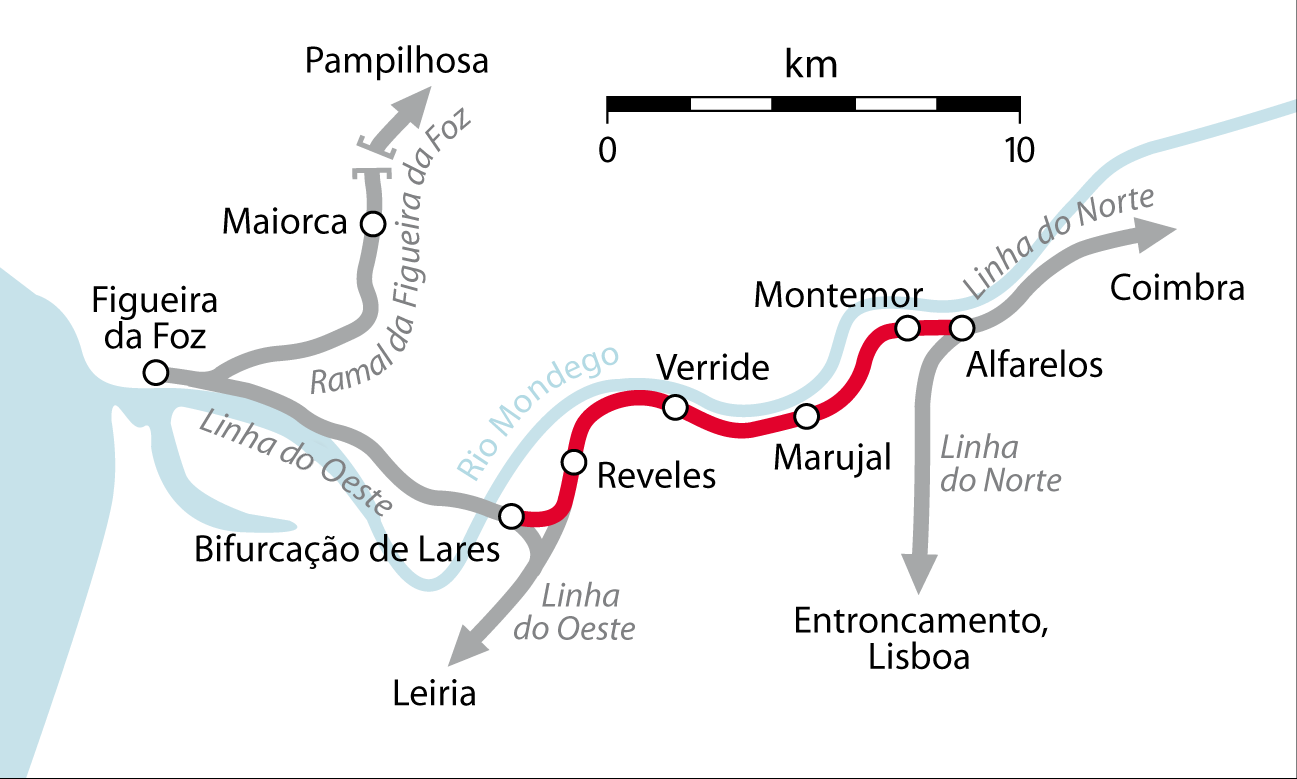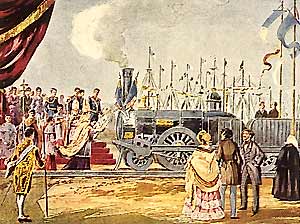|
Ramal De Alfarelos
Ramal de Alfarelos is a railway branch in Portugal, which connects the Western Line (at Bifurcação de Lares) to the Northern Line (at Alfarelos), offering a connection between Figueira da Foz and Coimbra Coimbra (, also , , or ) is a city and a municipality in Portugal. The population of the municipality at the 2011 census was 143,397, in an area of . The fourth-largest urban area in Portugal after Lisbon, Porto Metropolitan Area, Porto, and Bra .... CP offers both urban and regional services on this branch, as part of the Coimbra urban trains (connecting Coimbra to Figueira da Foz through Alfarelos) and of the Western Line. See also * List of railway lines in Portugal * List of Portuguese locomotives and railcars * History of rail transport in Portugal References Sources * Railway lines in Portugal Iberian gauge railways {{Europe-rail-transport-stub ... [...More Info...] [...Related Items...] OR: [Wikipedia] [Google] [Baidu] |
Portuguese Train Type 0350
The Série 0350 are a type of single carriage diesel railcar used by Portuguese Railways (CP). They were built by Allan of Rotterdam in the Netherlands in 1954-55 (as Série 0300). In 2000 they were extensively modernised and reclassified as Série 0350. The distinctive roof pod above the driver's compartment houses heat dissipators for rheostatic braking. Many of the lines used by these units have been closed in recent years, notably the Figueira da Foz and Lousã branches. In August 2017 CP restarted a one-per-day return passenger service on the Linha do Leste between Entroncamento and Badajoz (Spain) using a 0350 railcar.http://www.railwaygazette.com/news/passenger/single-view/view/entroncamento-badajoz-passenger-service-reinstated.html Railway Gazette International, 31 August 2017 Allan also built a metre gauge Metre-gauge railways are narrow-gauge railways with track gauge of or 1 metre. The metre gauge is used in around of tracks around the world. It was used by Europe ... [...More Info...] [...Related Items...] OR: [Wikipedia] [Google] [Baidu] |
History Of Rail Transport In Portugal
The history of rail transport in Portugal dates from 28 October 1856, when Portugal's first railway line was opened between Lisbon and Carregado: the ''Companhia dos Caminhos de Ferro Portugueses''. The network was gradually expanded both south of the Tagus and to the north of the country, as well as in the metropolitan areas of Lisbon and Oporto and to Spain. In 1887 the Douro railway line was completed; also in 1887 the '' Sud Express'' from Lisbon to France operated for the first time. In 1892 a law was passed creating the Board of Directors of the ''CF Estado'' (State Railways), but most railways remain in private ownership albeit with greater state regulation and requirement for co-operation. In 1910 the Portuguese monarchy was replaced by a republican constitution; there were also notable strikes by railway workers in 1910, 1911, 1912, 1914, 1918, 1919, 1920, 1922 and 1923. In 1926 the railway between Cascais and Lisbon was electrified at 1500 volts DC and the line's n ... [...More Info...] [...Related Items...] OR: [Wikipedia] [Google] [Baidu] |
List Of Portuguese Locomotives And Railcars
This list provides an overview of the locomotives and railcars of the Portuguese railways, that is, the traction stock of earlier private railways, the state-owned ''Comboios de Portugal'' (CP) and its predecessor, the municipal '' Metropolitano Ligeiro de Mirandela'' and the two private transport companies ''Fertagus'' and ''Takargo Rail Takargo Rail is a Portuguese rail transport company founded in 2006 by Mota-Engil to take advantage of rail liberalisation in the European Union. History Founded in 2006 by Mota-Engil, the company was the first private train operator in Portugal, ...''. Broad gauge steam locomotives Companhia Central e Peninsular dos Caminhos de Ferro em Portugal (CCeP) Originally 1440 mm gauge; taken over by the ''Companhia Real dos Caminhos de Ferro Portugueses'' in 1857; regauged to 1672 mm in 1860. South Eastern of Portugal Railway (SEPR) 1440 mm gauge Built by British investors; also known by its Portuguese name ''Companhia dos Camin ... [...More Info...] [...Related Items...] OR: [Wikipedia] [Google] [Baidu] |
List Of Railway Lines In Portugal
This is a list of railway lines in Portugal. List Sources * {{Railway lines in Portugal Portugal Lines Line most often refers to: * Line (geometry), object with zero thickness and curvature that stretches to infinity * Telephone line, a single-user circuit on a telephone communication system Line, lines, The Line, or LINE may also refer to: Arts ... * ... [...More Info...] [...Related Items...] OR: [Wikipedia] [Google] [Baidu] |
Coimbra
Coimbra (, also , , or ) is a city and a municipality in Portugal. The population of the municipality at the 2011 census was 143,397, in an area of . The fourth-largest urban area in Portugal after Lisbon, Porto, and Braga, it is the largest city of the district of Coimbra and the Centro Region. About 460,000 people live in the Região de Coimbra, comprising 19 municipalities and extending into an area of . Among the many archaeological structures dating back to the Roman era, when Coimbra was the settlement of Aeminium, are its well-preserved aqueduct and cryptoporticus. Similarly, buildings from the period when Coimbra was the capital of Portugal (from 1131 to 1255) still remain. During the late Middle Ages, with its decline as the political centre of the Kingdom of Portugal, Coimbra began to evolve into a major cultural centre. This was in large part helped by the establishment of the first Portuguese university in 1290 in Lisbon and its relocation to Coimbra in 1308, making ... [...More Info...] [...Related Items...] OR: [Wikipedia] [Google] [Baidu] |
Figueira Da Foz
Figueira da Foz (), also known as Figueira for short, is a city and a municipality in the Coimbra District, in Portugal. Practically at the midpoint of the Iberian Peninsula's Atlantic coast, it is located at the mouth of the Mondego River, west of Coimbra and sheltered by hills (Serra da Boa Viagem), sharing about the same latitude with Philadelphia, Baku and Beijing. The population of the municipality in 2011 was 62,125, in an area of . The city of Figueira da Foz proper has a population of 46,600. It is the second largest city in the district of Coimbra. It is a coastal city with several beaches, summer and seaport facilities on the Atlantic Ocean coast. As a tourism city, it plays an important part in the centre of the country. A zone of legal gambling, one can find in Figueira one of the biggest casinos of the Iberian Peninsula – the Casino Figueira. History According to the legend, the place's name is due to a fig tree, which stood at the quay of Salmanha, where the ... [...More Info...] [...Related Items...] OR: [Wikipedia] [Google] [Baidu] |
Linha Do Norte
Linha do Norte is the Portuguese main railway line that connects the two main Portuguese cities, Lisbon and Porto. Its length is . It goes through some other important cities like Vila Franca de Xira, Santarém, Entroncamento, Pombal, Coimbra, Aveiro, Espinho & Vila Nova de Gaia, amongst others. It constitutes the backbone of the Portuguese railway system of freight and passenger services, running approximately 720 trains (both freight and passenger) daily. As part of the plans for a high-speed rail network, there will be a parallel high-speed line (up to ) to relieve this main line, since it has reached a saturation threshold where it's impossible to add additional freight trains without jamming the fast passenger services ( InterCidades and Alfa Pendular). See also * CP Urban Services * List of railway lines in Portugal * List of Portuguese locomotives and railcars * History of rail transport in Portugal The history of rail transport in Portugal dates from 28 O ... [...More Info...] [...Related Items...] OR: [Wikipedia] [Google] [Baidu] |
Linha Do Oeste
Linha do Oeste (Western Line) is a railway line serving the central western coast of Portugal belonging to Infraestruturas de Portugal network. The line was opened in 1887. Passenger services are operated by CP. The line is used also by freight trains from CP; the new private freight operator Takargo also plans services using this line. See also * List of railway lines in Portugal * List of Portuguese locomotives and railcars * History of rail transport in Portugal The history of rail transport in Portugal dates from 28 October 1856, when Portugal's first railway line was opened between Lisbon and Carregado: the ''Companhia dos Caminhos de Ferro Portugueses''. The network was gradually expanded both south ... References Sources * External linksSchedule {{Railway lines in Portugal O Railway lines opened in 1887 Iberian gauge railways ... [...More Info...] [...Related Items...] OR: [Wikipedia] [Google] [Baidu] |




.jpg)
